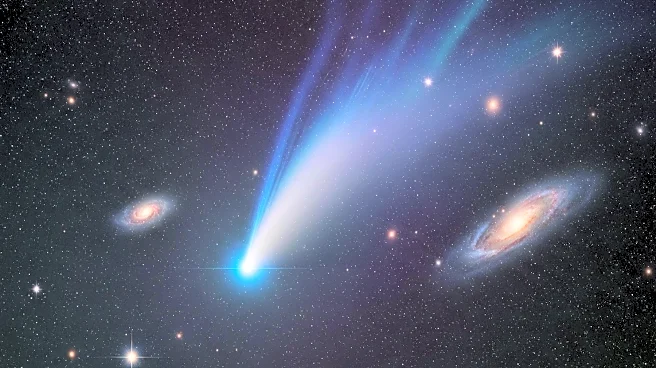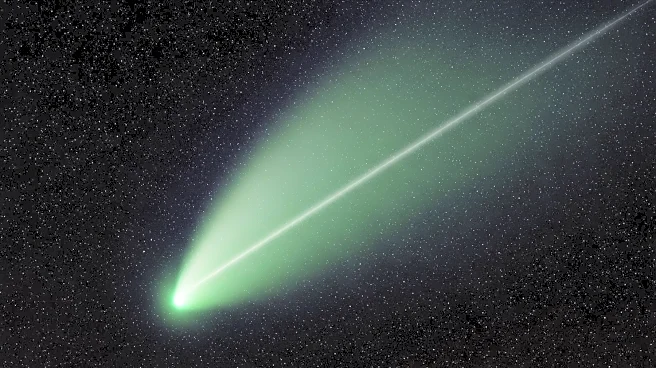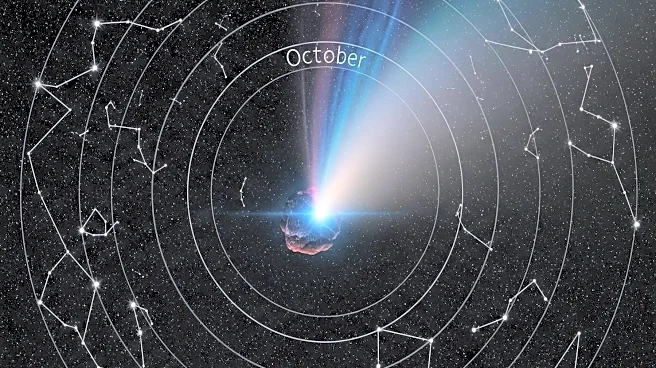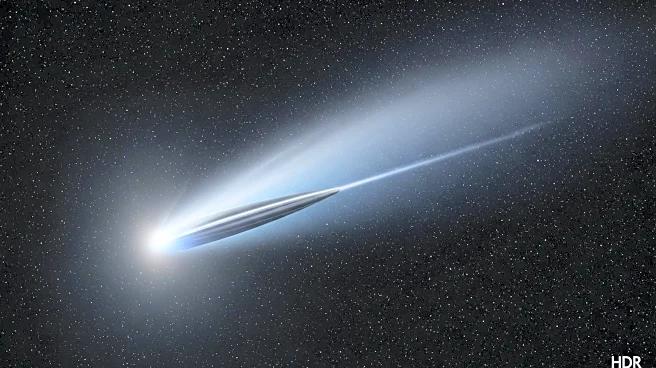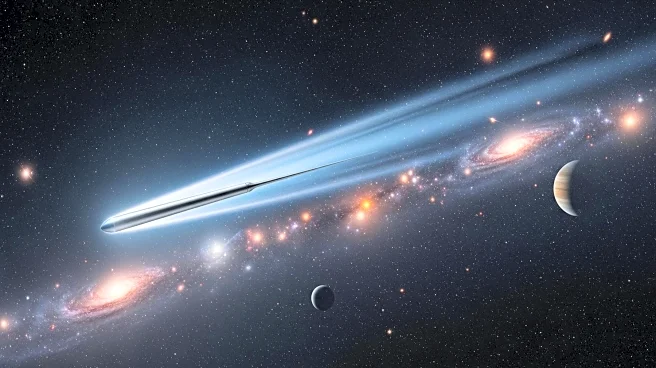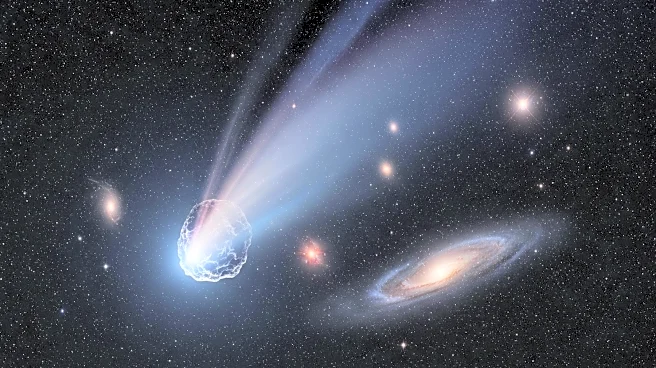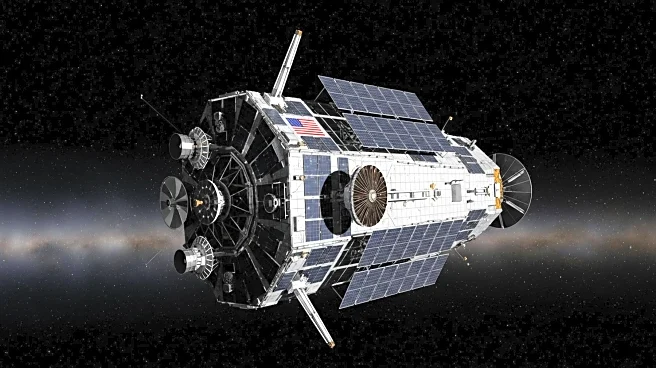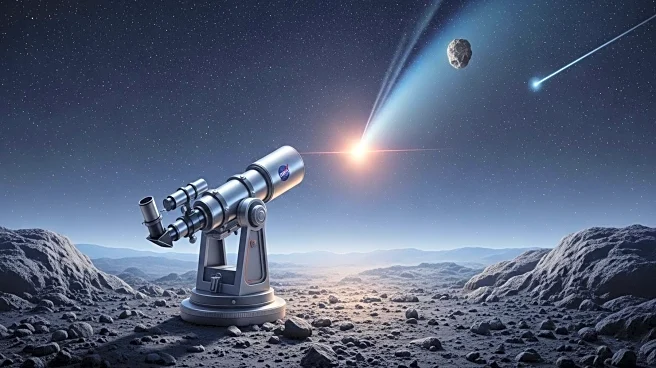What's Happening?
NASA has announced that Comet C/2025 R2, also known as SWAN, will become visible in the night sky in October. Discovered by a spacecraft on September 12, the comet takes 22,000 years to orbit the Sun. Currently, it is difficult to observe due to the glare from evening twilight, but it is expected to become more visible as it moves higher in the western sky after sunset. The comet is within reach of standard binoculars, and its brightness will determine how well it can be seen. This comet is notable for its long orbital period, meaning it won't return to the vicinity of Earth until around the year 24,579.
Why It's Important?
The appearance of Comet C/2025 R2 offers a rare opportunity for astronomers and the public to observe a celestial event that occurs once in a lifetime. Such events can inspire interest in astronomy and science, potentially influencing educational and career paths. For scientists, studying comets like C/2025 R2 can provide valuable insights into the early solar system, as comets are considered to be remnants from that era. The visibility of this comet also highlights the advancements in space observation technology, as it was discovered by a spacecraft designed to study the Sun.
What's Next?
As Comet C/2025 R2 becomes more visible, astronomers and enthusiasts will likely attempt to capture images and data to study its composition and trajectory. Public interest may lead to increased participation in astronomy-related activities and events. NASA and other space agencies may use this opportunity to engage the public with educational content about comets and space exploration. Additionally, the comet's visibility could lead to further scientific research and publications, contributing to the broader understanding of cometary science.
Beyond the Headlines
The discovery and observation of Comet C/2025 R2 underscore the importance of international collaboration in space exploration. As space agencies around the world continue to share data and resources, the global scientific community can benefit from a more comprehensive understanding of our solar system. This event also highlights the role of technology in expanding our knowledge of space, as advancements in spacecraft and observation tools enable the discovery of celestial bodies that were previously undetectable.

